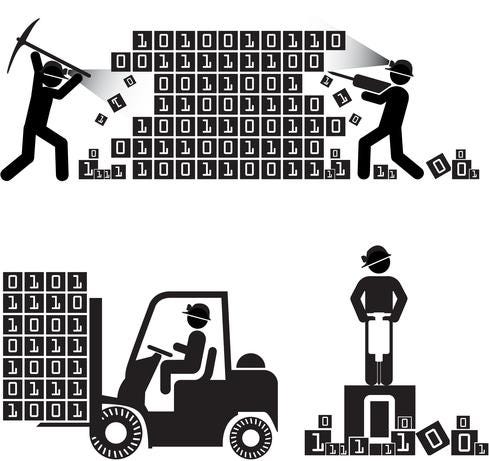VMware Goes All-In On ContainersVMware Goes All-In On Containers
New VMware products elevate containers from an afterthought to a primary vehicle for application delivery.


9 NoSQL Pioneers Who Modernized Data Management
9 NoSQL Pioneers Who Modernized Data Management (Click image for larger view and slideshow.)
VMware has altered its stance on containers and now treats them as first class citizens, alongside its own virtual machines, in the virtualized data center. It's also adding new power to one of the favorite tools of administrators moving virtual machines around: vMotion.
Popular live migration function vMotion will now work between an enterprise data center and VMware vCloud Air data centers. That might seem ho-hum to observers used to hearing about vMotion inside the data center. But experienced virtual machine administrators know just how tricky it can be to move VMs between on-premises and cloud data centers.
It is a rare occurrence in today's enterprise data center to attempt the feat.
Migration between data centers can be done, but it's almost a case of special engineering. The networks involved must be pre-aligned and matched up, and timing is everything. Non-essential parts of the running virtual machine are moved ahead of time along with the data being used, then activity is suspended for a few milliseconds, and the final parts moved over the wire.
VMware is one of the biggest contributors to the Network Time Protocol (which syncs time between computer systems on the Internet and private networks) for good reason: The coordination of time between the resumed virtual machine at a remote location must be a close match to that of the source, or else its data stream will fall out of step.
[Want to learn more about hyperconvergence? See Hyperconvergence: Redefining The Data Center.]
The announcement of the availability of vMotion across geographically separate data centers gave VMworld, which got underway in San Francisco Monday, Aug. 31, one of its loudest and most spontaneous moments of applause. "Can you believe that vMotion?" called out Bill Fathers, VMware executive VP and general manager of cloud services, as he returned to the stage after the cross data center demo.
At a pre-keynote briefing, several VMware executives prepared media and analysts for a change of thinking on containers. In the past, VMware has been wary of them, citing security concerns and concluding containers were good -- provided they're run inside a virtual machine.
This year there was a striking change of heart. Developers love Docker, Rocket, and Cloud Foundry's Garden, and so does VMware, declared Kit Colbert, CTO for cloud-native applications. "We see our role as being very complementary to all those providers," he said during the briefing.
Figure 1: 
(Image: masterzphotois/iStockphoto)
VMware's vSphere virtual machine provisioning and management system is now also a container provisioning and management system. Since DockerCon in late June, VMware has been working on Virtual Container Host, a container endpoint that can be configured and reconfigured to host multiple containers. They run in a virtual machine, but Virtual Container Host may be running dozens or hundreds in one virtual machine. A large assembly of Docker containers "could be an entire vSphere cluster one moment and a fraction of the same cluster the next," depending on the containers' needs, explained Colbert in a blog post Aug. 31.
VMware has compressed the amount of time it takes to launch a Virtual Container Host and now claims it can get a container up and running in a virtual machine in two seconds. Part of the reason is that it's using its Photon version of Linux -- a slenderized copy requiring only 25 MB of RAM -- to equip a host to run the container. Another part of the reason is that it's found ways to throw away parts of the hypervisor that aren't needed in the container's operation to speed the hypervisor's launch.
The result is Linux containers that fit into the virtualized part of the data center with strong isolation characteristics, but also a high speed of activation and initial response. Two seconds is still slower than a
Continued on page 2
container launched on bare metal, but it's a huge decrease from what the container in a virtual machine used to require: many seconds or even minutes.
Asked during the pre-keynote briefing why VMware was so far behind the widespread developers' march toward containers, Ray O'Farrell, VMware's CTO and chief development officer, took exception to the question. "We are far from behind. Our job is to solve real world problems ... the solution needs to be real and be compatible with the IT manager's existing technology." Its answer is vSphere Integrated Containers, the version of vSphere that uses Virtual Container Hosts, which became available Monday, Aug. 31.
VMware also made available a second approach to containers from within the virtualized data center, the Photon Platform, a software stack optimized to run containers. The new product includes Photon Machine, a lightweight hypervisor or "microvisor" derived from ESX Server. It has the 25-MB Photon operating system built in. The platform also consists of the Photon Controller, a distributed control plane that includes identity and access management, derived from VMware's Project Lightwave.
Colbert said VMware plans to make Photon Controller open source to engage with developers and customers already using open source code to establish their container environments. Photon Platform has both an API and a command line interface to allow developer access.
Colbert said VMware hasn't invented a new container distribution system. On the contrary, it is willing to use Apache Mesos, Docker Swarm, or Google-sponsored Kubernetes with its Photon Platform.
VMware also announced EVO Software-Defined Data Center (SDDC EVO), a follow-up to its EVO Rail hyperconverged, private cloud appliance (the enlarged version of EVO Rail formerly known as EVO Rack). While EVO Rail is "a mid-market appliance" for customers who want to convert part of the data center into a private cloud, EVO SDDC is "a data center-wide system," said Fathers, and can be used to span as many server racks as required.
VMware officials fit the new products into the company's overall approach of trying to help customers achieve a hybrid cloud style of operation. Containers are part of efficient data center operations, they acknowledged, and offer a useful way to move workloads around. Now it's up to customers to use vSphere in the manner they choose, as a virtual machine and container host, capable of communicating with the VMware vCloud Air public service.
About the Author
You May Also Like






